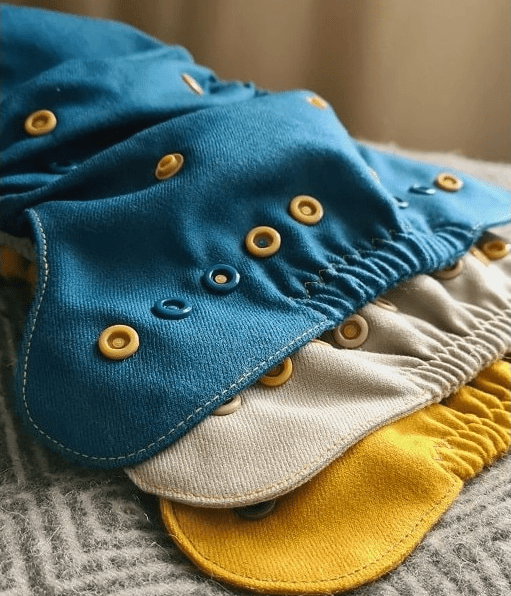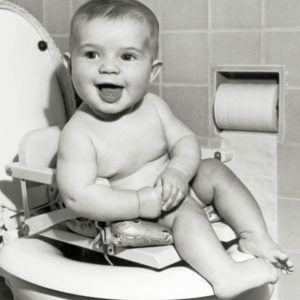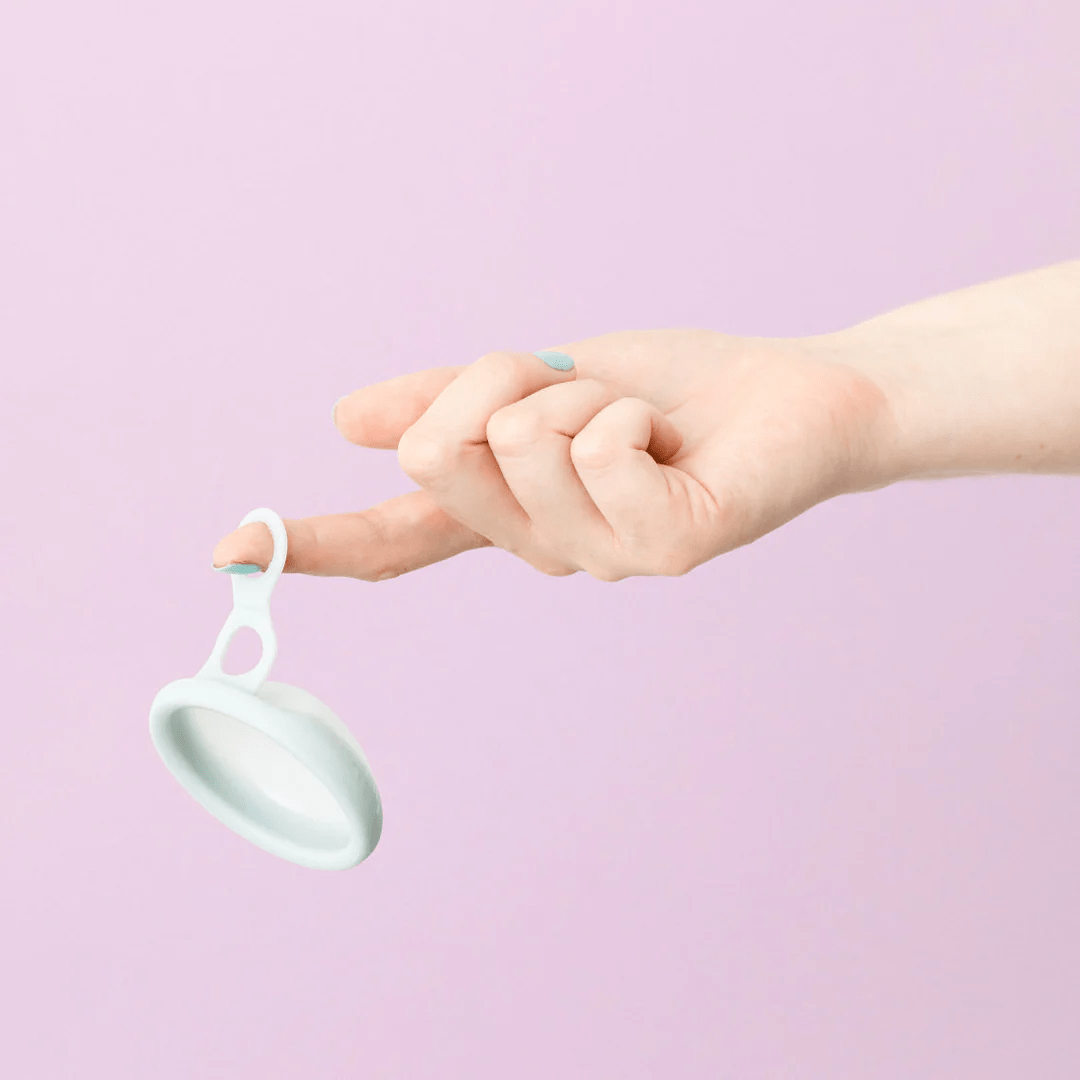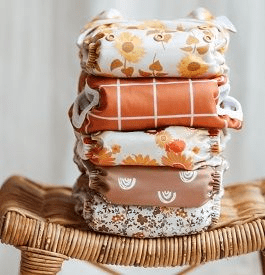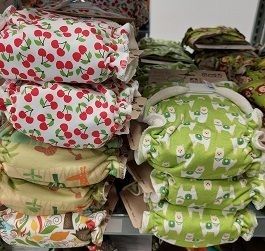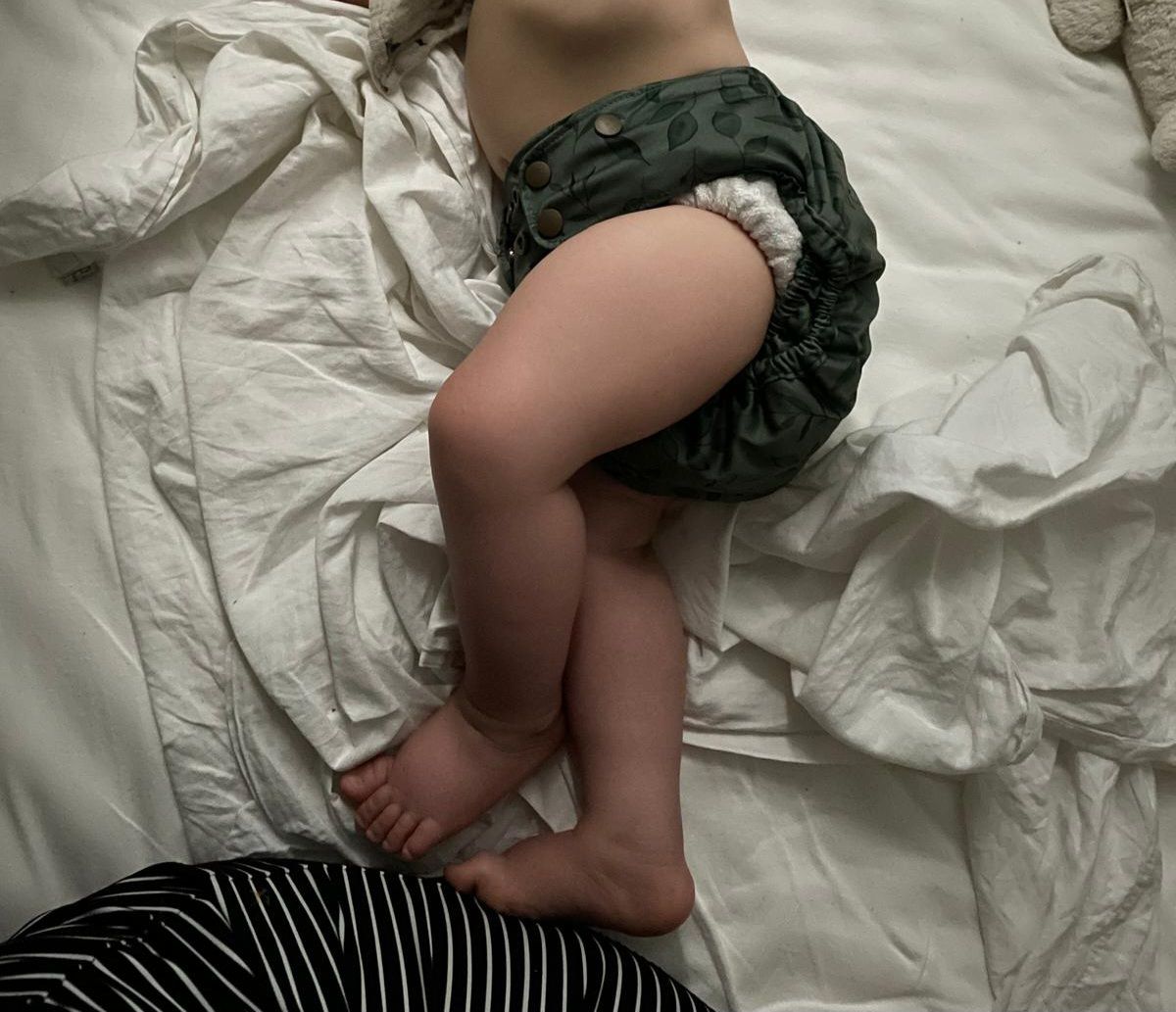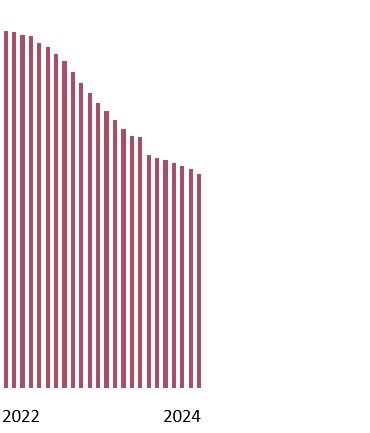What exactly are wool covers?
You can use wool covers/trousers/pants as a replacement for TPU/PUL covers. Before using wool covers, you have to lanolize wool covers so that they become water-resistant. Ideal for long nights and/or (newborn) babies with sensitive skin and children who pee a lot. Even if you like to use natural products, wool covers are very nice. They absorb some of the moisture and therefore leak less quickly than PUL covers. In addition, wool regulates heat, making them nice and warm in winter and nice and cool in summer.
Sounds fantastic, right? It certainly is, but you must ensure that your wool covers are properly lanolized. And lanolizing scares many people away because it's a hassle. Shame! That hassle is really not that bad.
Lanolizing wool covers is done as follows:
- You wash the wool covers with a little wool detergent or baby shampoo.
- Dissolve a large teaspoon of lanolin in hot water and add a dash of wool detergent or baby shampoo. The soap ensures that the lanolin does not solidify immediately when the water cools
- When the lanolin has dissolved, your lanolin mixture is ready and you can top up the water with cold water until the water feels lukewarm. Be careful not to add too much cold water, the water should remain milky white in color!
- Place the wool covers inside out in the lanolin mixture and let it soak overnight
- If you have new wool cover, repeat this process two more times so that you have lanolized a total of three times. This means making the mixture again and soaking it three times. The wool cover do not need to dry in between. If you have used wool cover, lanolizing once after washing is usually sufficient.
- Remove the wool cover from the lanolin mixture and turn them right side out. Roll the wool cover firmly between two towels to get as much water out of the wool cover as possible.
- Lay the wool cover flat to dry and ready for use!
If wool cover have been properly lanolized, the wool cover will feel greasy and dirty, sticky. This is good! After wearing them overnight, the wool cover will be a lot less greasy and your child will have wonderfully soft legs.
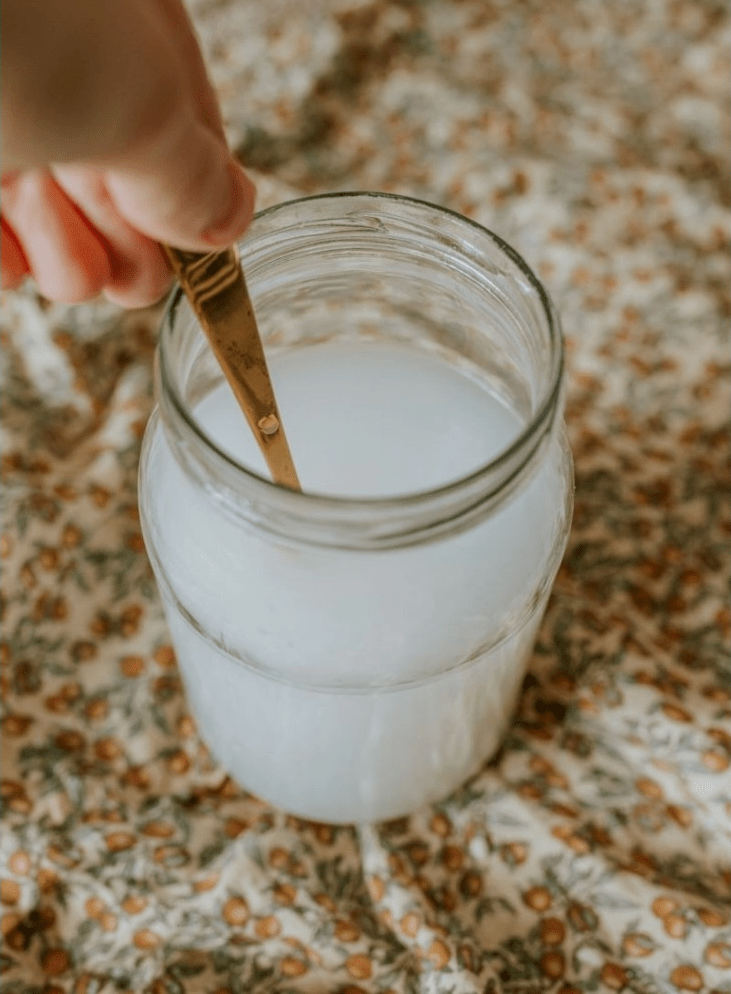
Now I talk about lanolization all the time, but what is lanolin?
Lanolin is another word for wool grease. Wool grease forms a weather-resistant layer around a sheepskin so that a sheep does not feel rain, snow, cold and wind on the skin. Lanolin is extracted by washing the wool. If you then let the water evaporate, you will be left with fat. That fat is quite thick and solidifies at low temperatures. The lanolinization card that you receive from us with your order states that you must use a large teaspoon of lanolin. When we talk about lanolin, we mean solid lanolin. There are also products such as diluted lanolin and lanolin soap for sale. This contains too little lanolin to properly lanolize wool cover. You can wash your woolen clothes and woolen cover with it.
Another major advantage of wool covers is that, unlike PUL/TPU covers, you do not have to wash them daily. In general, you can use wool covers for weeks at a time if no stool comes into them. After use, hang the pants to air out, even if the pants feel wet. If wool covers no longer smell fresh after airing, it is time to wash and lanolize the wool covers again.

Which wool covers are there and when do you use them?
There are pull-up wool covers, wool covers with closure and wool covers with long legs, the so-called Longies.
The knitted wool covers from Disana and Popolini are ideal for the night. They have a wide band that runs across the belly and legs. This means you have less chance of leaks. It can be a solution, especially for stomach sleepers, because there is no closure at the front and therefore no pressure leakage. These wool pants are less suitable for daytime use because they are quite bulky and large. This means that clothing does not easily fit over these wool trousers. You can buy these wool covers per size. We advise you to purchase an entire clothing size larger than your child currently has. This is because wearing, washing and lanolizing your wool covers becomes felted and therefore becomes smaller. The wool covers may be a bit large at first, but that's okay, that's actually kind of cute!
We have the wool covers with closure in a few different variants. The Jersey wool covers from Hu-da and the Puppi wool covers are adjustable in size. Jersey wool covers are stretchy, because the wool is knitted, the wool trousers are a bit elastic. Puppi wool covers are made of two thin layers of 100% merino wool and are therefore very thin and flexible. Hu-da's boiled wool covers are not adjustable, you buy them per size. They are also a bit stiffer due to the boiled wool, but are very water resistant. Wool covers with closure fit well over folding diapers or narrow fitted diapers and can also be used during the day, for frequent urinators or as covers at night.
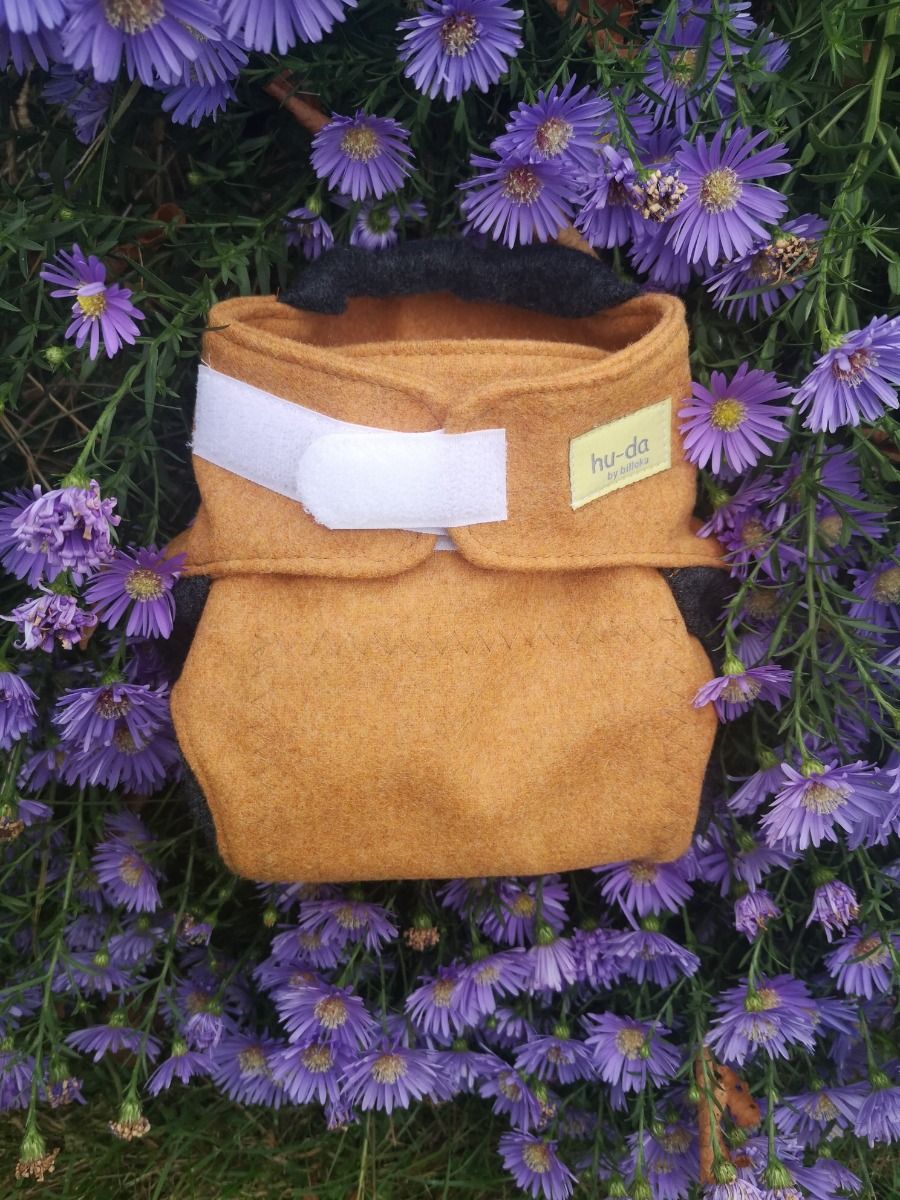
The Longies from Hu-da are long wool trousers made of knitted and washed wool, also called walking wool. The name gives it away a bit, it is slightly softer than boiled wool but firmer than jersey wool. You can use these pants as regular pants, great for romping and playing, but also over a fold cloth diaper or fitted diaper. This can be done both during the day and at night. This Longie then replaces the 'normal' trousers. Before use over a folding diaper or fitted diaper, you must lanolize the wool pants. If you use the pants as play pants or regular pants, you do not need to lanolize the pants, but this is of course allowed!
Written by Cyrille, product expert reusable diapers Nappy's.eu
